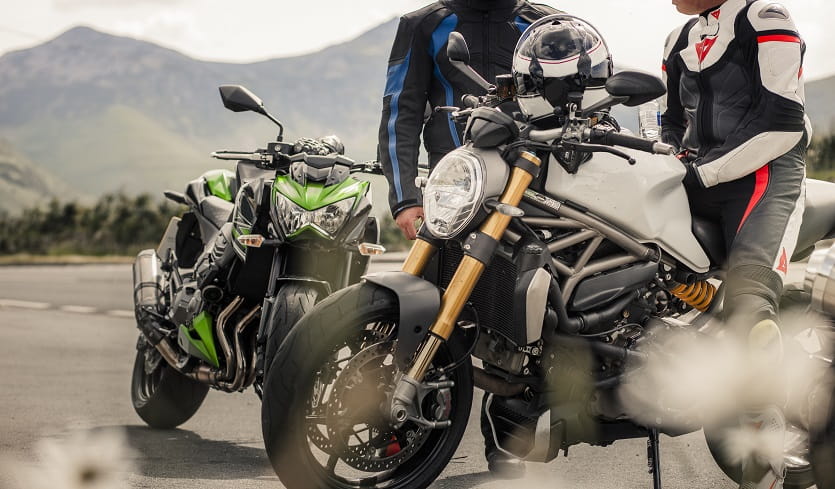Selling your bike doesn't have to be complicated and stressful. By doing a bit of preparation and by taking note of the following simple step-by-step guide, you can avoid some of the pitfalls that some sellers walk into.
There are a few basic steps to take which will hopefully lead to you holding a bundle of cash waving goodbye to your bike as the new owner rides out of your road and round the corner.
See below for some useful advice and tips on selling your bike.
Preparation
First things first, you're going to have to get your hands wet! Remember, when you first bought your bike, how shiny it was in the bike showroom? Invest in some wet wax and chain lube and get washing. If it looks good, people will pay the money.
Once it looks good check the bike visually inside and out. Give it a mini service. You should check the oil, tyres, coolant, electrics and chain to make sure they are all in working order. Fix any leaks and adjust the chain. Replace any blown bulbs and clean the brakes. The more effort you put in, the less a buyer will have to haggle about.
Make sure you check it starts and that it runs smoothly. There's nothing worse than having a buyer come round and the bike won't start!
If your bike needs an MOT, get one. An un-MOT'd bike is difficult to sell. A full year's MOT is a good sign for any buyer. Tax isn't important, as it is not transferred to the new owner so they will need to organise that with the DVLA before they ride away, or declare it off the road (SORN).
Bike Check
Most buyers will want to complete a bike check on the bike before they buy. You will need the registration plate as a minimum, and ideally the frame and engine numbers and the MOT certificate serial number.
You'll then get a report to tell the seller whether the bike has been written off and rebuilt, has finance owing on it, has been registered stolen, if the frame and engine numbers are correct, or even if the MOT is a fake.
It is much easier and saves a lot of time to have one already waiting so the buyer doesn't have to worry.
Information
Have ready all the information about the bike, it will make all of the above checks much easier. Make sure you have all the service records, receipts for any modifications/accessories added to the bike, previous MOT, logbook and tax receipts.
The more information you have to hand, the more smoothly the selling process can be.
Put the current logbook, service history, MOT certificate and service receipts in a folder and don't forget to include the owners manual and toolkit.
Pricing
The next step is deciding how much to sell your bike for. When listing your motorcycle for sale, price the bike realistically using www.usedbikeguide.com or by checking the price of similar bikes in bike magazines or online. This will give you an indication as to what its worth if you sell it privately or if you go to a dealer depending on its condition.
Where To Sell It
Like buying, you can sell your bike privately, or to a dealer. A dealer will give you less than a private sale. If you're in a desperate hurry for cash, or are trading in your bike for a newer one, then selling to a dealer will be quicker and easier.
You can also speak to other bikers and find out their opinion on where to advertise your bike. Local bike clubs or dealers may have Noticeboards that you can put a for sale notice up for free.
Test Ride
Be careful about offering a test ride. Use your common sense - if you've any doubts at all, don't let the bike out of your sight - it might not come back again.
If you are thinking about saying yes to a test ride, then ask for the asking price in cash as a deposit. At least that way if they do a runner, you won't lose out.
Make sure that the person riding the bike is insured to ride your bike. The only real proof is seeing a motorbike insurance certificate with entitlement to ride other bikes.
Another good way to guard yourself is to take a photo of the buyer. Even using your mobile phone is fine. This way if your bike does get stolen, at least you can show the police who did it.
Haggling
You want the highest price, the buyer wants a bargain. Haggling is an art and one that you have to be good at to succeed. Unless you are really desperate for money, don't sell to the first buyer who turns up, unless they offer the full asking price!
Stick to your guns, but don't cut your nose off to spite your face. It's better to lose £50 on the deal than be stuck with the bike and have to re-advertise it.
Money
If the buyer wants to take the bike away there and then, ask the buyer to bring cash. It is much easier for both parties and it is the only real security when the buyer takes the bike for a test ride.
If the buyer wants to pay by cheque, do not let the bike go until the cheque has cleared in your account. Cheques can bounce and can be stopped easily.
Another option is a direct money transfer between the buyer's account and yours. If the buyer asks their bank for a same-day CHAPS transfer before 2pm the money will be in your account before the end of the day. It will cost the buyer £25 but they wont have to carry around large amounts of money and you wont have to wait seven days for the cheque to clear.
Receipt
Some buyers will ask for a receipt. Clearly write out the details of the bike, details of the buyer and the amount they have paid. Sign and date and most importantly write the famous 'sold as seen' on the bottom.
Log Book
After handing over the keys the final thing you must do is give the buyer the New Keeper section of the V5 logbook and send the rest off to the DVLA. The buyer gets to keep the New Keeper supplement as proof that they are now the registered keeper of the bike. You also need to get them to fill in their name, address, date of birth, driving licence number and the mileage of the bike on the main part of the V5. You then send this away to the DVLA and they'll send the buyer a new copy in their name.


